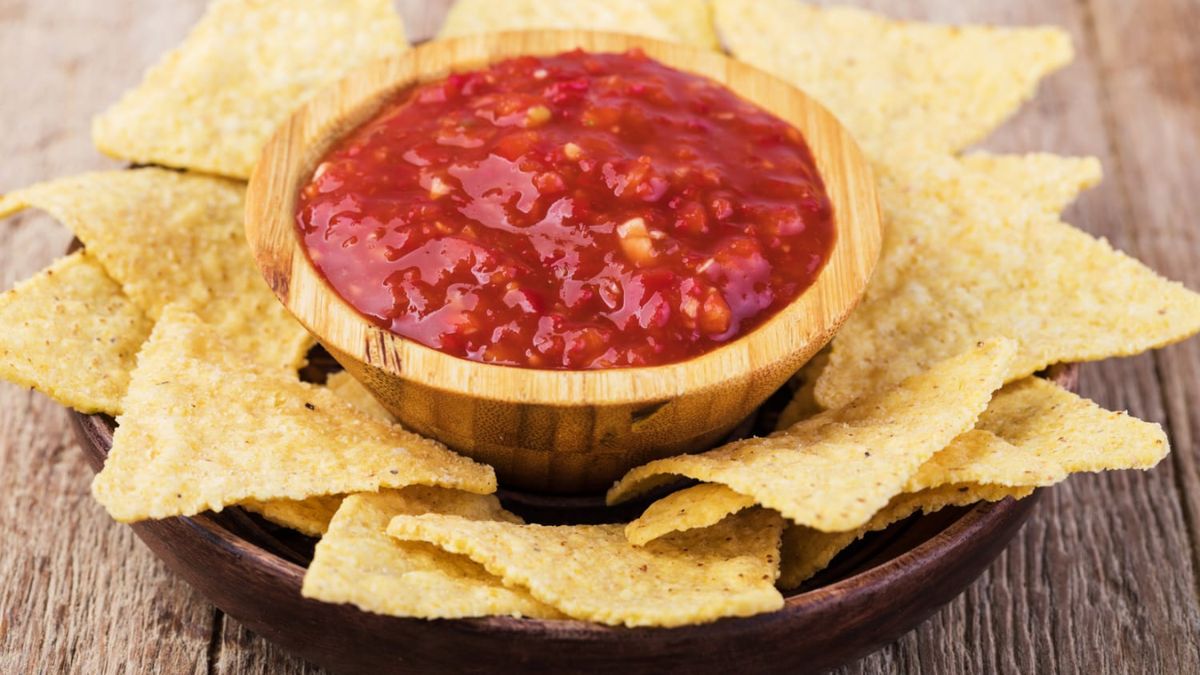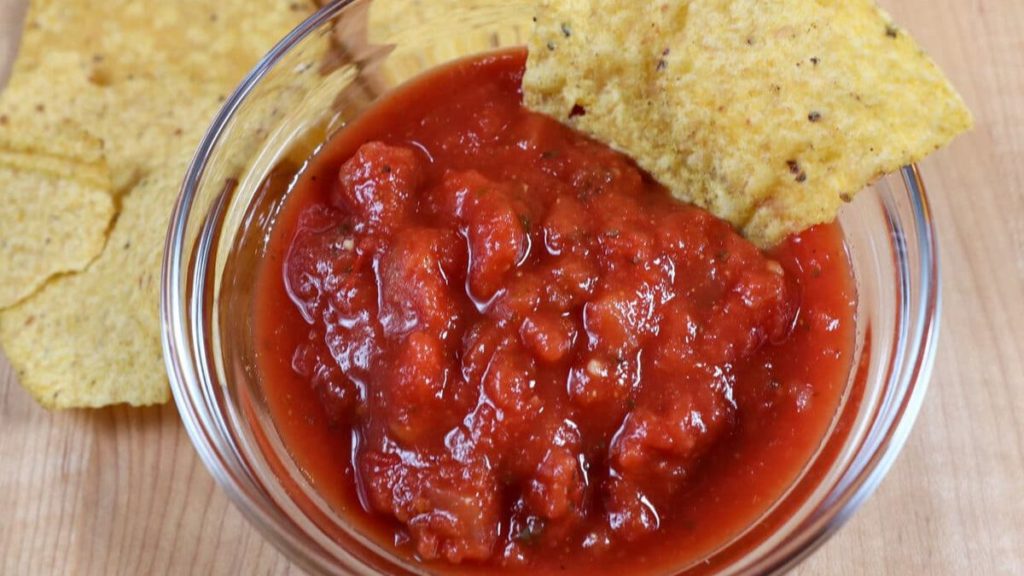Here are some tips if you want to know how to tell if salsa is bad. If the color, texture, or smell changes, it is time to throw it out. If you notice mold or blue-green patches, or if the salsa has a mushier texture, it’s time to discard it. If it smells weird, it’s probably spoiled. If you can’t stand the sour smell anymore, you should throw it out.
If your salsa looks and smells off, it’s probably gone bad. Check the expiration date on the jar. If it’s too dark, it could be rancid. It’s also likely to have a moldy smell. And finally, if you can smell rotten, you’ve got a spoiled salsa. Don’t waste it if it smells bad.
What is Salsa?
Almost every type of food in the world has its relish. Chutney is used in Indian food, and most Western food is chow-chow or pickle relish. Salsa is the most important dish in Spanish and Mexican food. The salsa made at home is very different from what you can buy at the store.
The word means “sauce” in Spanish, and it is usually a condiment made from tomatoes, onions, garlic, cilantro, salt, hot peppers, and a little vinegar or lemon juice for acidity. Sometimes the mixture is cooked, or the tomatoes are blanched, but it is also often served without any heat.
As most of these condiments, salsa can be used in many ways. In the past, it was a tasty way to keep tomatoes for a long time and kept their health benefits. Salsa also gave food flavor and seasoning. It is mostly used to flavor foods or as a dip for tortilla chips in the modern world. But it can be mixed with cheese dip to make a tasty snack dip or added to Mexican food as a relish or topping.
Most salsa starts with tomatoes, but you can also use other vegetables or fruits. Mango salsa is a newer dish that has become very popular. It uses mostly the same ingredients, but instead of diced tomatoes, it uses cubed mango.
Peach salsa and tomato-based recipes with black beans and corn are also interesting ways to change the dish. It has some hot pepper, the only thing they all have in common. The heat is, of course, up to the cook, and it can be anywhere from mild to volcanic.
How to Tell if Salsa is Bad?
If you notice any of these, discard the salsa. Another way to tell if your salsa is bad is to check its expiration date. Commercial salsas contain preservatives to extend their shelf life, typically lasting about a month, but some salsas will last longer. And, if you’re worried about the freshness, opt for a refrigerated option. So, now you know how to tell if salsa is bad. Keep in mind that if the salsa is not refrigerated, it’s likely to be contaminated by bacteria or viruses.
Colour and Texture: One of the signs that salsa is no longer good to eat is that it has changed in texture and color. When salsa is fresh, it is a bright red color. As time passes, its color changes to a dark red or brownish shade, and if a thin, rubbery layer forms on top of the jar, the sauce is no longer good. The obvious signs that salsa has gone bad. These include signs of mold or any other organic growth on the surface or inside the container, foul or off odor, or sour taste.
Odor: The smell is often the best way to tell if salsa has gone bad. Any unpleasant or sour smell, like when salsa goes bad and smells rotten and fishy, is no longer safe to eat. If you want to know if salsa has gone bad, look for a big change in color or smell. It may be bad if the product has turned darker, like maroon.
If the salsa has become mushier and smells bad, throw it away. Check to see if there is mold. It hasn’t gone well if the salsa is covered in blue-green spots. Salsa doesn’t last long, so it’s important to know if it’s gone bad or not. It would help if you didn’t eat salsa that has grown mold or smells bad.
Mold Spots: If your jar of salsa hasn’t been opened and the “sell by” date hasn’t passed, you might want to keep it until you can test to see if it’s still good to eat. To test commercially canned salsas, open the lid and look at how the salsa looks. If it doesn’t taste or smell right, don’t eat it.
Check your jars of homemade salsa for discoloration or visible signs of mold, two reasons why homemade salsas go bad faster than store-bought ones. Instead of trying to taste salsa, please pick up the jar and give it a good shake. If you see bubbles or pockets of air, the salsa has gone bad.
Cracks in the top layer and dryness around the mouth of the jar are also red flags. If this happens, don’t take chances because salsa can have dangerous bacteria like clostridium botulinum.
How to Store Salsa?
Since salsa is made with fresh ingredients, it stays good for a long time. Due to the preservatives in most store-bought jars, homemade and store-bought salsa have different shelf lives. Store-bought salsa that hasn’t been opened should last between 12 and 18 months in the pantry.
It will last longer if you keep it in the dark, cool place. Once you’ve opened it, you should try to use it within two weeks before it starts to go bad. If you make your salsa, you should keep it in the fridge and use it up within 5–7 days. Like most things that have just been made, it tends to go bad much faster.
Putting salsa in the fridge is the best way to store it. This is especially true for homemade salsa, which only lasts a few days before it goes bad. It is best to put the item in the part of the fridge that is the coldest. Keep the temperature steady to keep food from going bad. If you buy salsa from the store, you don’t need to put it in another container. Its original packaging will keep it in good shape for a long time.
- The salsa sauce should be kept in the dark, dry place away from light. The shelf life of unopened salsa can be cut short if it is kept next to a heat source.
- Ensure your product is in an airtight container and lasts as long as possible. You can also cover dishes that don’t have an airtight lid with aluminum foil. The same thing is true for salsa; don’t put an open can in the freezer at any time.
- To keep salsa fresh, avoid getting it dirty by scooping it out with clean tools. Don’t leave hummus out after using it; put it in the fridge as soon as you’ve used what you need.
- Putting it in the fridge is the best way to store it if you want the best results. You can also freeze salsa sauce, but it’s not a good idea because the texture and consistency change when it thaws.
What are the Health Benefits of Salsa?
Salsa is one of the most popular condiments in the world, and it can be made with traditional tomato, jalapeo, mango, or strawberry. Fresh salsa is one of the best ways to add more flavor and important (and tasty!) nutrients to your food. With all the good things salsa can do for your health, you can add more to your favorite foods.
1. It’s a Good Dose of Vitamin C
Vitamin C is found in large amounts in lime juice, onions, and tomatoes. Vitamin C helps keep your heart healthy and keeps you from getting heart disease. It’s not stable when heated, so it can be lost when food is heated. But salsa is often eaten raw, which is great for getting vitamin C into your body.
2. It can Stabilize Blood Sugar
Fiber comes from the cell walls of plants, and salsa has a lot of fiber but no fat or sugar. This is a great way for people with type 2 diabetes to add flavor to their food without increasing their blood sugar. Fiber makes us feel full after eating and doesn’t make the body’s insulin come out.
3. It’s Hydrating
Water makes up more than 95% of a tomato’s weight. Adults should drink eight glasses daily and eat foods high in water, like fruit and tomatoes. Since water is needed by every cell in your body, eating more salsa can help your body work better.
4. It May Protect Against Cancer
The carotenoid lycopene is found in tomatoes. It has been linked to a lower risk of cancer. Tomatoes aren’t the only type of fruit or vegetable with lycopene, but they are responsible for about 80% of the lycopene that Americans eat.
5. It will Help you Burn Fat
The capsaicin in jalapenos, often found in fresh salsa, gives them their heat. Capsaicin can make your body burn more fat, which can help you lose weight. Check out this guide on what to eat to speed up your metabolism and lower your blood sugar to learn more.
6. It’s Healthy for your Heart
Dietary cholesterol comes from foods that come from animals. Salsa only contains ingredients that are from plants, and it’s naturally cholesterol-free.
Can you Freeze Salsa?
If the date on your salsa is coming up, freezing is a great way to make it last longer. This is also true for salsa made at home. Surprisingly, salsa lasts a long time in the freezer. But we recommend making smaller portions out of a batch. So, you won’t have to thaw a block of frozen salsa to get a few ladlefuls. Just put the product in a container that can go in the freezer before you freeze it for the best results!
Conclusion
The salsa at each Mexican restaurant is different. Some people roast the tomatoes first, and some restaurants saute their onions or use hot peppers like banana peppers instead of the usual jalapenos. Some restaurants serve “chunky” salsa, while others like smoother salsa.
One of the best things about salsa is that it is good for you. It has vitamin C and all the good things that tomatoes are known for. Plus, it doesn’t have many carbs, fat, or cholesterol. A typical serving has about 15 calories, much less than the average calories in French onion dip. So, it’s a healthy snack that also tastes good. It’s easy to make at home, and any chef who tries it will be happy with the results.


